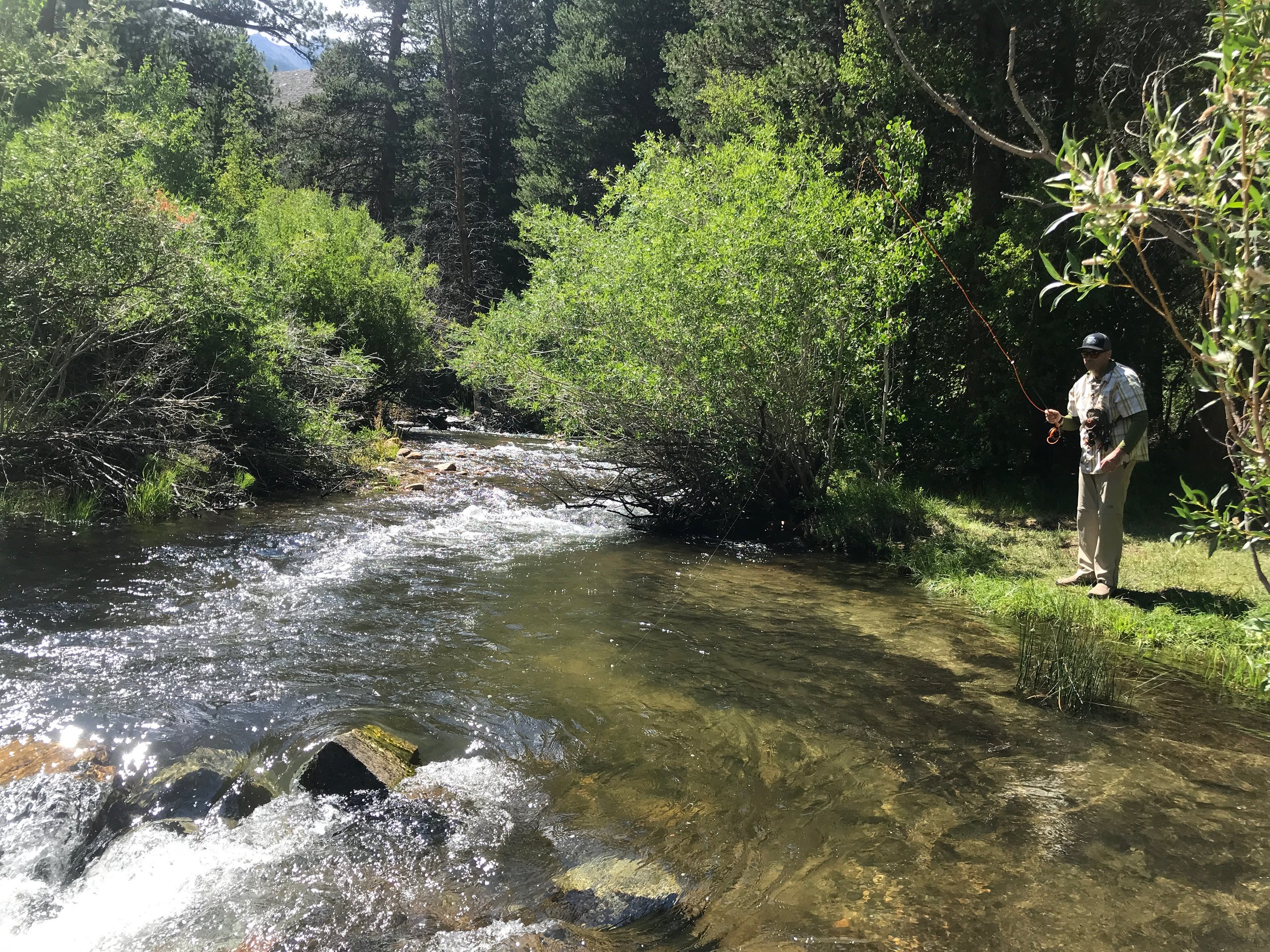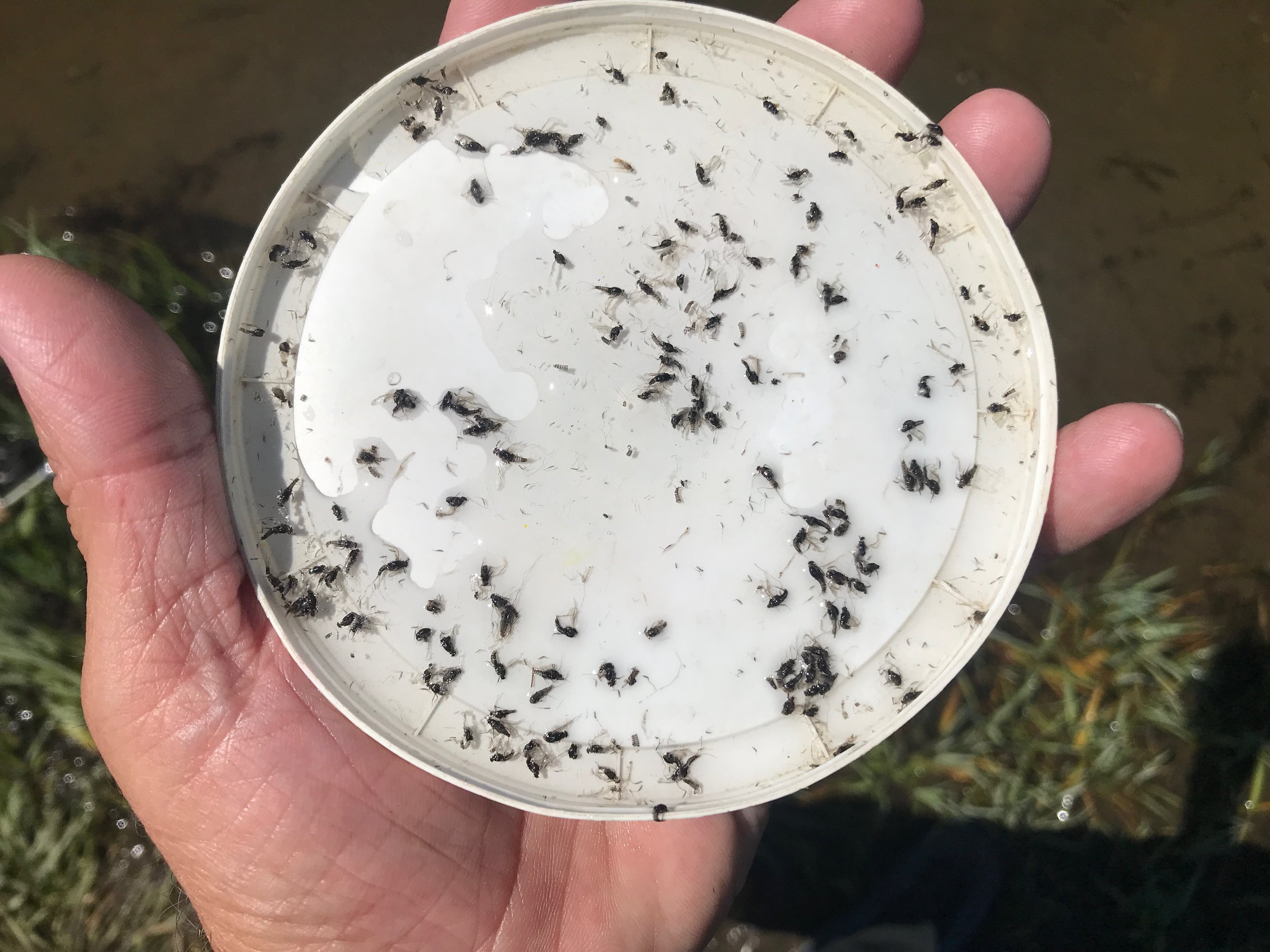Afternoon thunderstorms continue to keep things cool, particularly in the higher elevation waters. A voluntary hoot howl is in effect to protect trout when water temperatures are over 70 degrees as trout mortality greatly increases beyond that point. Crowley Lake cooled off enough that a few guides that quit fishing to protect the fish are back to guiding on the lake as surface water temperatures are below 70 degrees. Freestone creeks are fishing well with dry flies. Trico mayflies and caddis hatches are providing action for fly fishers on spring creeks and tail water fisheries in the Eastern Sierra.
Fly fishers should continue to monitor water temperatures on Eastern Sierra streams and lakes through the end of August.
Freestone Creeks:
Rock Creek:
If you can find secluded spots that are relatively flat you will find good fly fishing for wild brown trout and rainbow trout. Fish your favorite dry fly here as you will fish it with confidence. I like to use fly patterns that are visible on the water and float well. Stimulators in size 14 or 16 is a fly that I use when I need to suspend a heavy nymph below the dry fly. The closer you get to South Lake the more brook trout you will find taking your favorite dry fly.
While bush whacking along Bishop Creek, Richard Standridge found a hole to dab his dry and dropper rig in.
Bishop Creek
Middle Fork:
I fished between Intake Two and Aspendale with a dry and dropper rig. Turned out that the creek had been stocked recently and I fooled several rainbows into taking the bead head gold ribbed hare’s ear nymph. A few wild brown trout took the Adams parachute off the top as well as a few that took the nymph. Wet wading working upstream is the way to fish this section of the creek. Worked the pocket water and pools.
Lower Owens River:
Wild Trout Section:
By noon water temperatures are above 70 degrees and fly fishers should not be practicing catch and release fly fishing. Early in the morning and late in the evening the water temperatures are cool enough to safely catch and release trout. Evening caddis activity have the trout coming to the surface. Mornings have been the time to nymph fish. I’m using my Euro rig to dredge the deeper holes and runs that the fish are hanging in. They’re feeding on caddis nymphs and mayfly nymphs.
Getting out early on the Owens River with an indicator rig will produce wild brown trout.
Hot Creek:
Interpretive Site:
Morning hatches of trico mayflies continue to keep the trout actively feeding on the surface. Start off with a trico female parachute. When the hatch has been going for a while, the spinner fall will be starting and fly fishers should switch to a trico spinner pattern. After the spinner fall look for either a blue wing olive hatch or a caddis hatch. Both insects have been hatching sporadically. Hatch activity will be over by noonish.
Afternoon thunderstorms are cooling off the water and increasing insect activity.
Hot Creek:
Canyon Section:
Weed beds are making fishing hard for some fly fishers. The key is to get a drag free drift in the narrow slots between weed beds or fish the few open pools or riffles. Fishing a dry fly in these narrow windows of opportunities is easier than drifting a nymph. Tricos and caddis are the two insects the trout are feeding on. Fishing is over by noon as the hatch activity stops. Evening caddis activity is worth spending an evening on the creek.
Trico spinners were on the menu for the 10-inch wild brown trout caught on the upper Owens River.
Upper Owens River:
Above Benton Crossing Bridge:
Water temperatures are staying below 70 degrees. Mornings start off with a trico hatch. Start fishing with a female parachute pattern. Once the hatch is in full swing switch to a trico spinner as the spinner fall is short lived. After the spinner fall the caddis start hatching. Fish a size 18 elk hair caddis or an X-caddis. I’ve been doing better with nymphs in the deep pools, runs and cut banks. Success comes from thoroughly covering the water and getting the nymphs down on the substrate where the trout are feeding. Bead head flash back gold ribbed hare’s ears and stoner nymphs have been my most successful flies nymphing the upper Owens River.
Fly fishers practicing catch and release fly fishing on Bishop Creek Canal are off the water by noon because of water temperatures over 70 degrees.
Bishop Creek Canal:
Behind the Ford Dealer:
By noon water temperatures are over 70 degrees and fly fishers should quit fishing if they are practicing catch and release. Nymphing continues to be the most productive way of fly fishing the canal in the mornings. I’m using the Euro rig and catching wild brown trout and stocked rainbows on stoner nymphs, and green/gold wire Prince nymphs.
[FAR1]But why?






